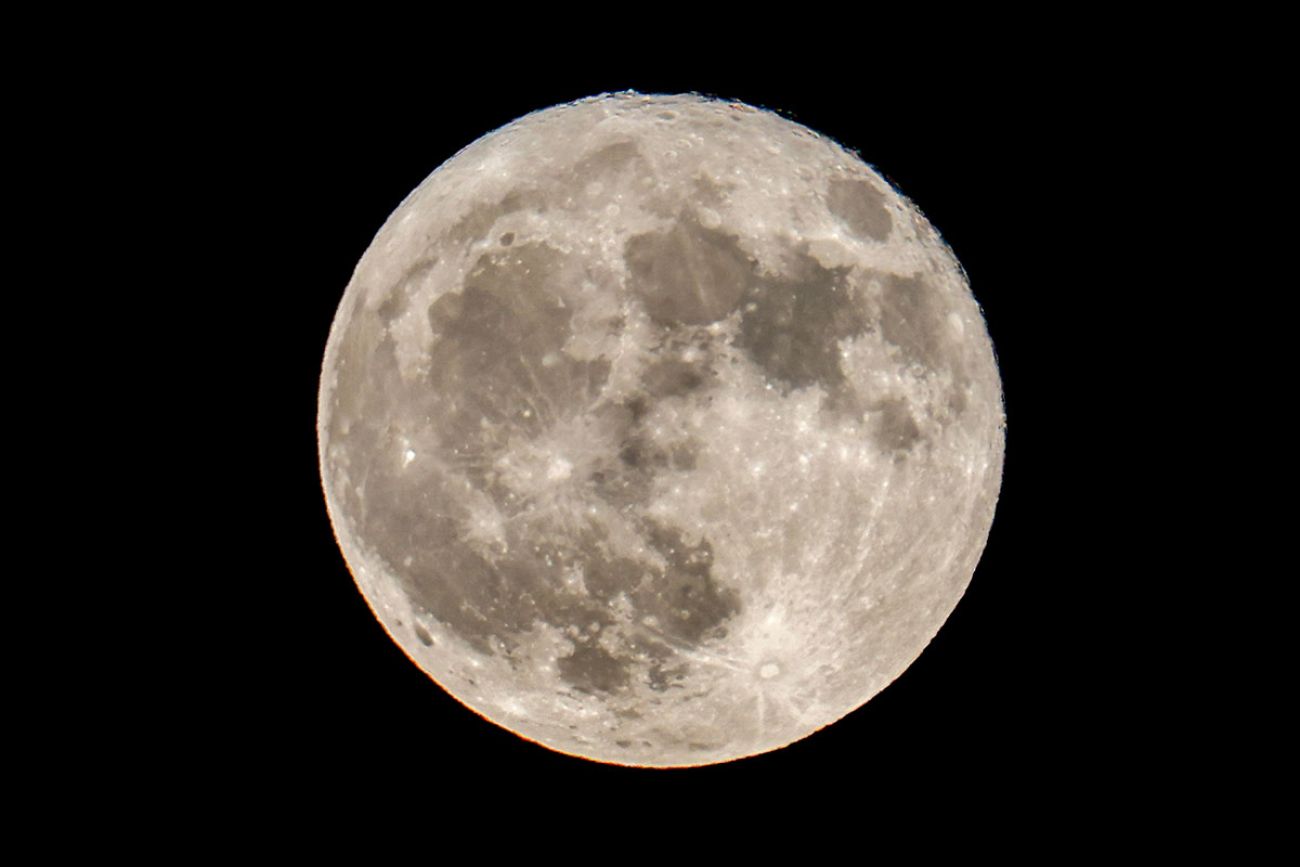Michiganders get ready for the ‘biggest, brightest’ moon so far this summer

- Skywatchers will be treated to a full supermoon Monday that’s also a blue moon and sturgeon moon
- The full moon may be visible in the afternoon before illuminating the night sky
- It will appear up to 30% brighter and 14% larger than it typically would
If the moon appears larger and brighter than usual on Monday it’s no illusion. It’s a supermoon, a full moon that occurs when our celestial neighbor is at its closest point to Earth.
Monday’s event is a triple-header. The supermoon is also a sturgeon moon and a blue moon.
It will appear around mid-afternoon and thereafter will light up the night sky Monday.
What is a supermoon?
Full moons are to be expected each month of course, but supermoons, which occur when the moon is closest to Earth, are more rare.
Supermoons are “the biggest and brightest full moons of the year,” NASA says. The one that appears on Monday will be the first of four supermoons this year. Supermoons appear up to 30% brighter and 14% larger than other moons throughout the year, according to NASA.
Related: Perseid meteor shower 2024: Where and when to see it from Michigan
The next supermoons will be, Sept. 17, Oct.17 and Nov. 15, according to Space.com.
What is a sturgeon moon?
The August full moon, also called the sturgeon moon, was named after large lake sturgeon fish, typically caught in the Great Lakes in August and early September, according to Space.com.
“In ancient times, you wanted to divine when to plant your crops and when to harvest your crops,” said Ted Bergin, astronomy professor at the University of Michigan. “The sun is higher in the summer in the sky at northern latitudes … and it's lower in the sky during the winter. So you would add all of these things together to try and figure out how to live.”
What is a blue moon?
Since this is also the third full moon of the summer, it is also considered a blue moon. Usually, there are only three full moons each season but there will be four this summer, the last occurring on Sept. 17, which will also be a supermoon.
Blue moons occur every two or three years and don’t appear blue. Hence where the phrase “once in a blue moon” comes from.
When to see the moon
The full moon will occur at 2:26 p.m. Monday, so it may be visible during the day. But it will be more visible in the night sky. If you can’t catch it Monday night, the full moon will be visible for a few more days as it transitions to the next phase
Michigan Environment Watch
Michigan Environment Watch examines how public policy, industry, and other factors interact with the state’s trove of natural resources.
- See full coverage
- Subscribe
- Share tips and questions with Bridge environment reporter Kelly House
Michigan Environment Watch is made possible by generous financial support from:
Our generous Environment Watch underwriters encourage Bridge Michigan readers to also support civic journalism by becoming Bridge members. Please consider joining today.
See what new members are saying about why they donated to Bridge Michigan:
- “In order for this information to be accurate and unbiased it must be underwritten by its readers, not by special interests.” - Larry S.
- “Not many other media sources report on the topics Bridge does.” - Susan B.
- “Your journalism is outstanding and rare these days.” - Mark S.
If you want to ensure the future of nonpartisan, nonprofit Michigan journalism, please become a member today. You, too, will be asked why you donated and maybe we'll feature your quote next time!






